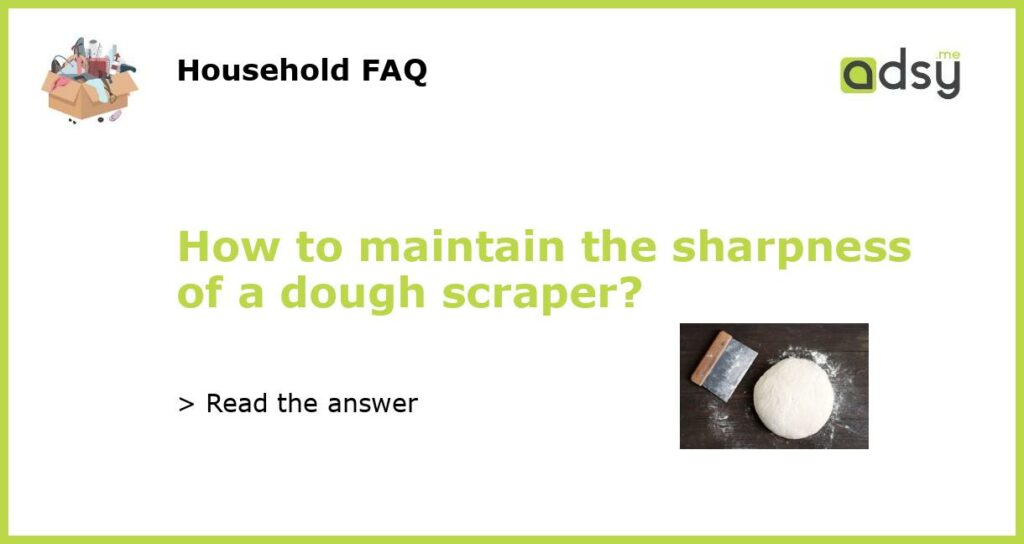Why is sharpness important for a dough scraper?
A sharp dough scraper is an essential tool for any baker or pastry chef. It is used to divide dough, lift and transfer dough from one surface to another, clean work surfaces, and scrape off excess dough. The sharpness of a dough scraper allows for clean and precise cuts, ensuring that the dough is divided evenly and smoothly. It also makes it easier to scrape off sticky dough from surfaces, preventing it from sticking and causing difficulties in the baking process.
Choose the right material for your dough scraper
The material of a dough scraper can affect its sharpness and durability. Dough scrapers can be made of stainless steel, plastic, or silicone. Stainless steel scrapers are typically the sharpest and most durable. They maintain their sharpness even after prolonged use and are also easy to clean. Plastic scrapers, on the other hand, may become dull over time and can be prone to breaking. Silicone scrapers are flexible and non-stick, but they may not be as sharp as stainless steel scrapers.
Proper usage and maintenance
Proper usage and maintenance are crucial for maintaining the sharpness of a dough scraper. When using the scraper, make sure to apply even pressure and use a rocking motion to cut through the dough. Avoid using excessive force or banging the scraper against hard surfaces, as this can cause the blade to lose its sharpness or even chip. After each use, clean the scraper thoroughly with warm water and mild soap. This will help remove any residue or stuck dough that may affect the sharpness of the blade. Make sure to dry the scraper completely before storing it to prevent rust.
Sharpening a dull dough scraper
If you notice that your dough scraper has become dull, you can sharpen it to restore its sharpness. One method is to use a sharpening stone or a whetstone. Wet the stone with water and then hold the scraper at a 20-degree angle against the stone. Move the scraper back and forth across the stone, applying gentle pressure. Repeat this process several times on both sides of the blade until the desired sharpness is achieved. Another option is to use a honing rod or a ceramic rod to sharpen the scraper. Hold the rod vertically and then slide the blade of the scraper across the rod at a 20-degree angle, applying light pressure. Repeat this process several times on both sides of the blade.
Replace when necessary
Despite proper maintenance, there may come a time when the dough scraper is no longer sharp enough to perform its tasks effectively. If you find that your dough scraper is becoming increasingly difficult to use or is not producing clean cuts, it may be time to replace it. Investing in a new dough scraper will ensure that you have a sharp and reliable tool for all your baking needs.






